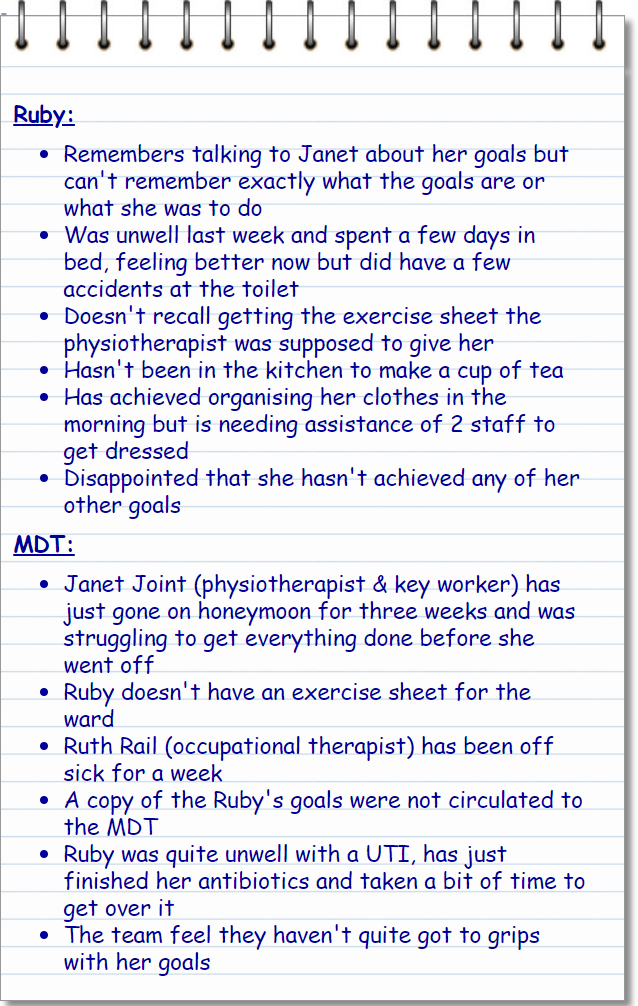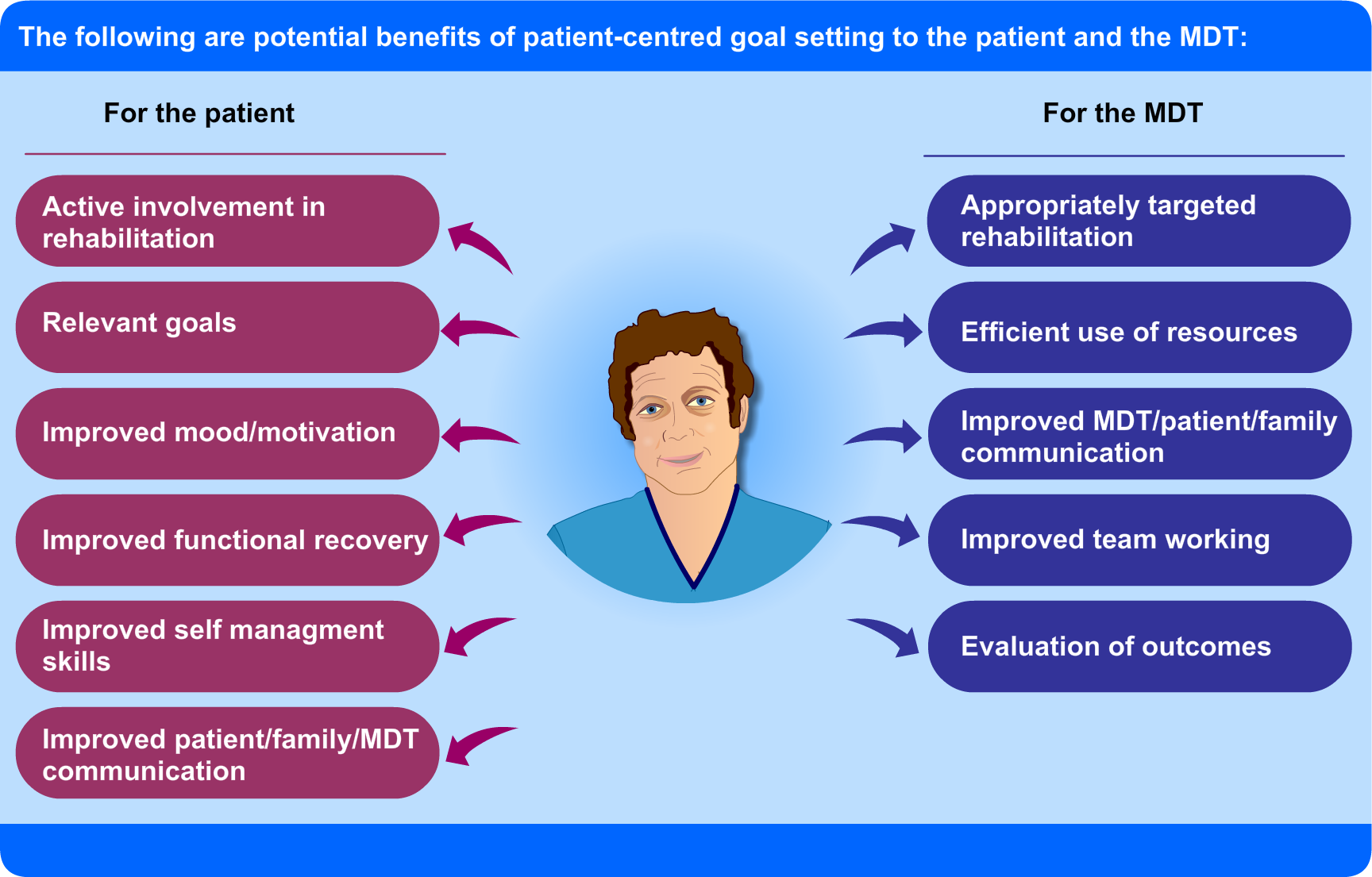Florence is asked to consider the challenges to delivering self-practice. Complete the quiz below to see what these may be.
Charlie emphasises how important good communication and written documentation is in the process of self-practice.

Florence is asked to consider the challenges to delivering self-practice. Complete the quiz below to see what these may be.
Charlie emphasises how important good communication and written documentation is in the process of self-practice.

Self-practice is the process of patients taking on responsibility for aspects of their rehabilitation/care with guidance and support from the rehabilitation team. This can help extend rehabilitation beyond formal therapy sessions. In addition practice within different environments of functionally relevant tasks and with different people encourages patients to take responsibility for managing their own condition.
Charlie has been asked to orientate Florence, a new student nurse, to the ward. In particular he is to show her what self-practice looks like in their unit. Go with Florence as Charlie takes her round the ward. NB: click on the arrow to return to ward interactive picture.
Charlie, Ruby and the MDT meet to review her goals. Below are Charlie’s notes, have a look at the outcome of the review.

Everybody, including Ruby, agrees that she has partially met one goal and has not managed to achieve the rest.
Ruby is a 69-year old woman who had a haemorrhagic stroke 5 weeks ago. She has a very supportive family and is keen for them to be involved. Her main issues are:
He finds her goal sheet in the case notes which were set 2 weeks ago and sees that her goals were to:
Charlie arranges to meet with his clinical supervisor to have a chat through how the goal setting process is going. Listen to their conversation:
Duration: 2 mins 11 seconds, format: MP4
Summary of what Charlie has learnt:
Charlie goes off to familiarise himself with Ruby Graham’s goals and to organise her review.
So, what does a goal sheet look like? Let’s see how Charlie got on writing Dorothy’s goals.
Having read through the comments, Charlie takes the opportunity to meet with his clinical supervisor to discuss and reflect on how his key worker role has gone so far.
Having reviewed the unit’s procedure Charlie commences his key worker role. He explains his role and the process to Dorothy and talks through why it may help her in her rehabilitation. She has a good understanding of goal setting as she regularly set goals for herself at home and at work before retiring. She can see the value of goal setting and is keen to engage with it. He leaves her to think about what she would like to work on and gives her the opportunity to discuss it with her family.
See Additional Information box for further information on the role of the key worker.
Charlie sets aside time and meets with Dorothy to identify her main priorities in relation to her recovery. Listen to the audio clip below of their meeting.
Duration: 2 mins 6 seconds, format: MP4
Charlie goes on to discuss with Dorothy and her rehabilitation team each of her priorities. Together they identify her current abilities and goals in relation to each one. Charlie documents them on her goal sheet.

Goal setting can be defined as the identification of and agreement on a behavioural target which the patient, therapist or team will work towards over a specified period of time. The setting of goals is central to effective and efficient rehabilitation (National Clinical Guideline for Stroke; RCP 2016, 5th edition).
At the MDT meeting Charlie has been nominated as the key worker for Dorothy Kildare; a new stroke patient just admitted to the unit. Prior to going to see Dorothy, Charlie re-familiarises himself with the unit’s patient-centred goal setting process. There are various ways of implementing goal setting clinically but currently there is no nationally recommended framework for delivering it. The following are two examples of frameworks which can be used. Also refer to your own local guidelines and pathways.
For further information on the terms used in these frameworks see the Additional Information box below.
Having looked at the unit’s process Charlie reminds himself of what is required for effective patient centred goal setting.
Thinking of what is necessary for effective MDT patient-centred goal setting has reminded Charlie that it can be a complex and time consuming process to deliver. He reflects on what the overall benefits of goal setting are for the patient and the team.